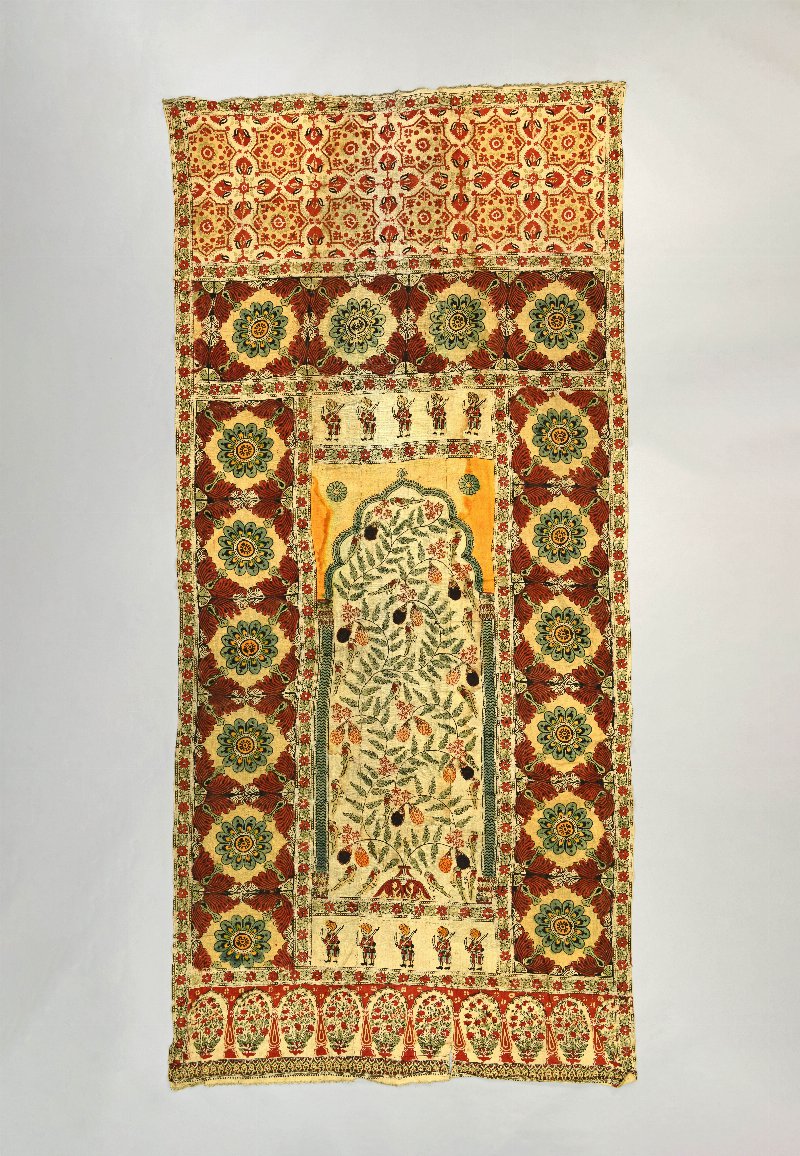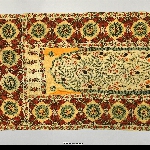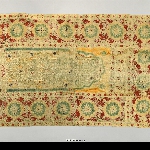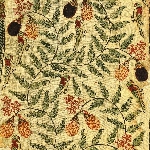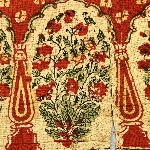Hanging
29-96-2
From: India | Gujarat (uncertain)
Curatorial Section: Asian
| Native Name | Qanat |
| Object Number | 29-96-2 |
| Current Location | Collections Storage |
| Culture | Indian |
| Provenience | India | Gujarat (uncertain) |
| Date Made | Late 18th Century - Early 19th Century |
| Section | Asian |
| Materials | Cotton |
| Technique | Block Printed | Resist Dyed | Mordant Dyed | Woven |
| Iconography | Flowering Tree | Hunting | Soldiers | Floral | Horse | Tiger | Antelope | Rabbit | Snake | Peacock | Parakeet | Falcon |
| Description | Block-printed and mordant-dyed plain-weave cotton hanging (qanat). The cotton fabric is soaked in a myrobalan (plant-derived) solution before it is printed and dyed, giving it an ochre color. The central design of the fruiting tree filled with parakeets is related to Mughal adaptations of the so-called ‘flowering tree’ motif with roots in early Iranian art. The motif enjoyed a long tradition in India, both domestically and as a popular subject for export markets. The ornamental acanthus base from which the tree springs shows a connection to European prints of floral bouquets and follows a compositional scheme likely derived originally from Chinese porcelain in which trees emerged from rocky mounds. The element of acanthus is repeated in the bold surrounding border design, which features repeating rosettes framed by acanthus palmettes. The fruiting tree is framed by two columns in a multilobed architectural niche—a typical composition of Mughal qanats (tent hangings). Above and below are friezes of five Sikh soldiers with swords and bayonets. The top register of the hanging is filled with a lozenge grid of eight pointed stars, and the bottom register features Mughal-style floral bouquets in a row of smaller architectural niches. |
| Length | 320 cm |
| Width | 160 cm |
| Credit Line | Bequest of Maxwell Sommerville, 1904 |
Report problems and issues to digitalmedia@pennmuseum.org.


